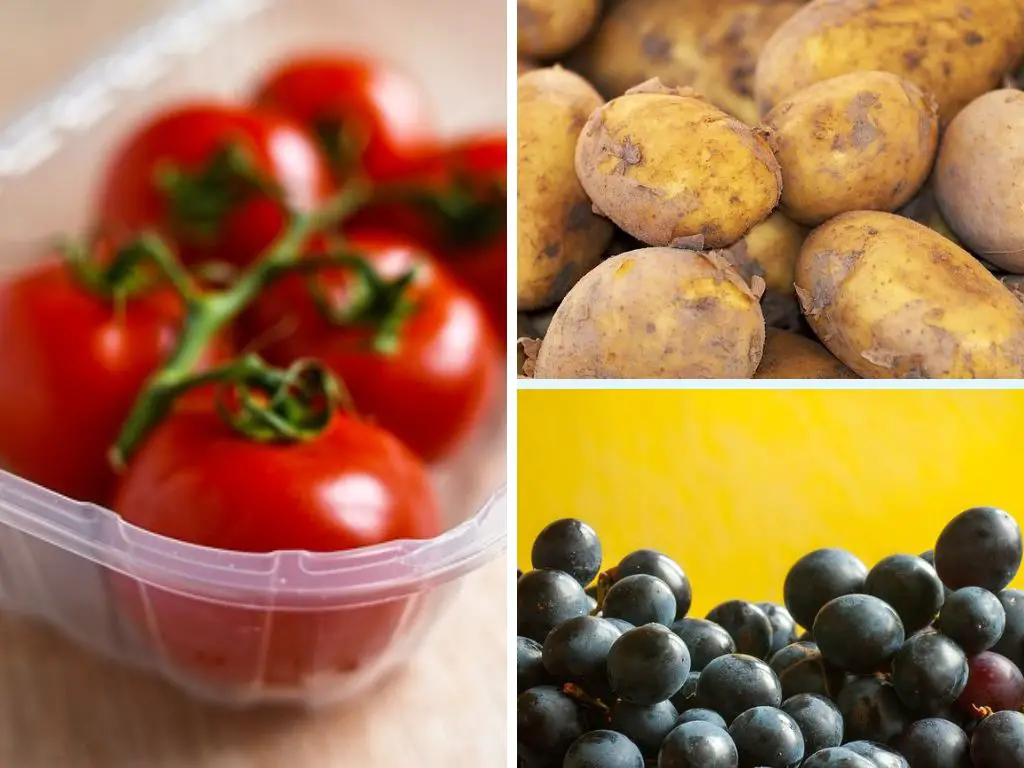In the guide below, we provide some key information about bioplastics.
We outline what they are, what they’re made of, uses for bioplastics, examples of different bioplastic types, compare them vs traditional fossil fuel plastics, and discuss other key information.
What Are Bioplastics? (Definition)
Bioplastics are a type of plastic material that are generally made from renewable plant and animals based sources, instead of non-renewable fossil fuel sources
What Are Bioplastics Made Of?
Primary Feedstock
There’s a range of renewable non fossil fuel sources (sometimes referred to as biomass) that can be used as feedstock for bioplastics
These feedstocks might be categorised into two major types:
– Plant Based Feedstock
– Animal Based Feedstock
Potential sources for each of these types of feedstock might include:
– Food crops and other plant sources
Which provide vegetable oils and fats, plant proteins like soy and gluten, and sugars from plants like sugarcane
Some other examples of plant biomass used might include corn starch (from corn kernels), straw, and wood chips and other woody mass
– Animals
Whereby animal fats/lipids, and animal proteins, are both used. They might come from ‘leftovers’ after animals are slaughtered
– Food waste and other types of waste
– news.climate.columbia.edu notes that wastewater and solid waste (crop residue, garden waste, human waste, and other forms of waste) may be used for biodegradable bioplastics in the future, depending on developments with these materials
What Else Is In Bioplastics?
Other ingredients used in bioplastics can include additives and plasticisers, which give certain physical properties and traits to the bioplastic material
What Are Bioplastics Used For?
Bioplastics are currently used across a range of items/products, and industries.
Individual types of bioplastics may have specific uses that match their traits and properties, and we list some of these uses in the section below where we give examples of the different types of bioplastics.
Main Categories Of Bioplastics
Three of the main categories of bioplastics might include:
– Durable
Is degradable, but has a chemical composition similar to traditional plastics
wikipedia.org lists some potential examples of ‘durable’ types of bioplastics in their guide
– Biodegradable
Might degrade in weeks or months under the right conditions, or in the right environment
wikipedia.org lists some potential examples of ‘degradable’ types of bioplastics in their guide
– Compostable
Composts under the right conditions, or in the right environment
Examples Of Different Types Of Bioplastics
Two of the main bioplastics are PLA (Polylactic Acid), and PHA (Polyhydroxyalkanoate).
Below is a description of some of the main types of bioplastics, and what they might be made of and used for:
– PLA (Polylactic Acid)
Usually made from sugars in corn starch (that come from corn kernels).
PLA is a biodegradable type of bioplastic.
In their report, news.climate.columbia.edu lists the types of traditional plastics that PLA might look and behave most like.
– PHA (Polyhydroxyalkanoate)
Usually made by microorganisms (sometimes genetically engineered) that produce plastic when fed high levels of carbon
PHA might have a similar chemical structure to traditional plastics
PHA is biodegradable, and can be used in medical applications
– Other Types Of Bioplastics
wikipedia.org goes into more detail explaining the different types of bioplastics
They indicate that ‘Thermoplastic starch represents the most widely used bioplastic, constituting about 50 percent of the bioplastics market’
Starch based plastics come under the ‘Polysaccharide-based bioplastics’ type, with cellulose-based plastics being another example.
Refer to the wikipedia.org guide for a more in-depth description of the different types of bioplastics, what they are made from, their uses, and so on.
Bioplastics vs Traditional Fossil Fuel Plastics: Comparison & Differences
Potential Differences
The main difference between bioplastics and traditional plastics is:
– Bioplastics are made from renewable non fossil fuel raw materials, that are usually sourced from plants and animals
– Traditional plastics are made from non-renewable fossil fuel raw materials, like petroleum and natural gas
Other potential differences might include:
– Bioplastics might generally have a smaller carbon footprint
– Bioplastics might generally use less non renewable energy in their production
– Some bioplastics might degrade faster than some traditional plastics.
‘Biodegradable’ bioplastics in particular may decompose in weeks to months under the right conditions
– Some bioplastics are compostable under specific conditions or in specific environments
These bioplastics are referred to as ‘Compostable’ bioplastics
– Bioplastics may not contain bisphenol A like some traditional bioplastics do
– Some bioplastics, like B-PET (a hybrid plastic), may score poorly compared to traditional plastics when it comes to some toxic effects on eco systems
– Some bioplastics, like B-PET (a hybrid plastic), may have a notable amount of carcinogens compared to traditional plastics
– Some bioplastics may be more expensive and less cost competitive to produce/make compared to traditional plastics
Potential Similarities
– Some bioplastics are only partially made from renewable materials
news.climate.columbia.edu indicates that ‘… bioplastics [are] made from 20 percent or more of renewable materials’
– Both traditional plastics and bioplastics generally contain additives and plasticisers (to give the plastic material physical properties like being flexible or stiffer), and as a result, may also contain chemicals like phthalates
This can lead to some traditional plastics and some bioplastics having similar chemical and molecular structures
– Some ‘Durable’ bioplastics may degrade at a much slower rate than other bioplastics, similar to the rate of traditional plastics
Potential Alternatives To Plastics
news.climate.columbia.edu notes that some companies are working on options to replace plastic altogether
They mentions that ‘… packaging materials made from the agar in red marine algae’, and ‘… biodegradable and edible film from the milk protein casein [that can wrap food]’ are both in development.
Sources
1. ‘Better Meets Reality’ guide about the pros and cons of bioplastics, and associated sources
2. https://news.climate.columbia.edu/2017/12/13/the-truth-about-bioplastics/
3. https://en.wikipedia.org/wiki/Bioplastic
','' ); } ?>
